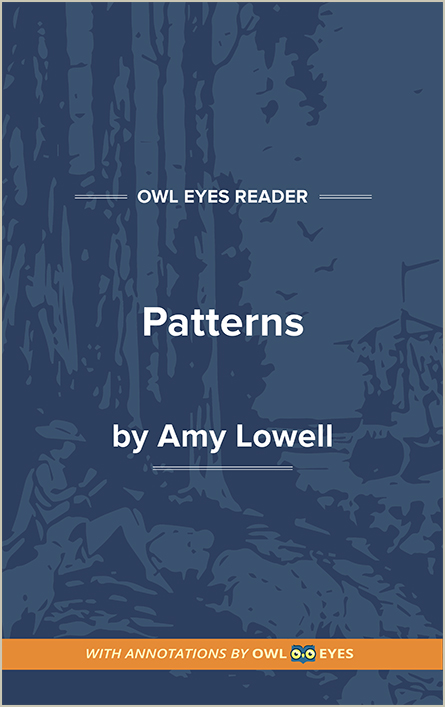Analysis Pages
Metaphor in Patterns
Metaphor Examples in Patterns :
Patterns
🔒"guarded from embrace..." See in text (Patterns)
"asters..." See in text (Patterns)
"Summer and in Winter I shall walk..." See in text (Patterns)
"blue and yellow flowers..." See in text (Patterns)
"white, morning sunlight,..." See in text (Patterns)
"What is Summer in a fine brocaded gown!..." See in text (Patterns)
"marble basin,..." See in text (Patterns)
";..." See in text (Patterns)
"softness of a woman..." See in text (Patterns)
"stain..." See in text (Patterns)
"softness..." See in text (Patterns)
"brocaded..." See in text (Patterns)
"a plate of current fashion..." See in text (Patterns)
"figured..." See in text (Patterns)

